foot in mouth: August 2010 Archives
From mid-June until late August, dance springs up in the most unexpected places in and around New York. From mid-August to the second week in September, practically all that is left of dance--and it isn't much--happens outdoors.
Starting in mid-July I spent a month wandering hither and yon, which is not as fun as it sounds. It is draining to negotiate subway, boat, and the dawdling summer streets for the sake of a half-hour dance. Site specific pieces are best stumbled upon.
Here's a Financial Times article that discusses five of the nine shows I saw:
Many New Yorkers wouldn't have a job if it weren't for the tourists, but that doesn't keep us from resenting them when every summer they take over sidewalks, clog subway entrances, and treat the trains like Special Operation convoys. New Yorkers depend for their sanity on being oblivious in public, and these invaders won't let us. But occasionally they make us wonder if we haven't grown too inured - which is where site-specific performance comes in. Sprouting up across the five boroughs in summer, this species of free outdoor event makes it safe to look around again.
At, for example, the dark windows spanning the 50 floors of One New York at Manhattan's southern tip. The more you look, the more confusing they become - are they convex, concave or contiguous with the building? More subtly disorienting are the tiles on the plaza below: the squares are set at a diagonal to the skyscraper and bordering streets. Each noon from July 16 to August 14 as part of the downtown River to River Festival, Canadian Paul-André Fortier offered a 30-minute ode to these Escheresque geometries.
On day 13, a blissfully overcast Wednesday, the buoyant, precise dancer oriented and disoriented himself within a 30 foot square marked out in duct tape. He swung his body into Ys and Xs, and flattened himself to the pavement in front of office workers on cigarette breaks and tourists en route to the ferries. The sound of traffic washed up from Water Street. Except for some teenage hecklers, the onlookers regarded the dance with a dispassionate interest that mirrored its own objectivity. In September 30X30 begins again, at the Théâtre de la Place in Liège, Belgium.
30X30 re-awoke its audience to Manhattan's grid and its extreme ups and downs: undeniable facts. At the Irish Hunger Memorial in Battery Park City, an excerpt from Christopher Williams' Voyage of Garbhglas - presented by the River to River Festival and Sitelines 2010 in the first week of August - transported us to the mythical and imaginary.
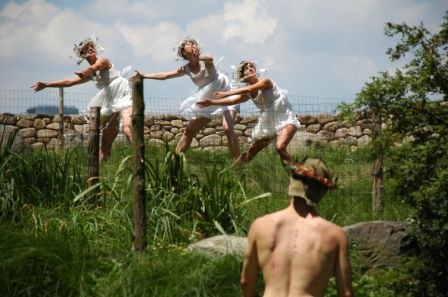
Michael Ingle encounters fairies Caitlin Scranton, Ursula Eagly, and Kira Blazek in Christopher Williams' Voyage. Photo by Douglas Back.
The review continues with more on Williams, a hip hop convocation around and about Lincoln Center, a romp on Governors Island, and a stirring Summerstage show on the Queens side of the East River in which Ailey dancers took on the role of choreographer.
The Joyce Theater in Chelsea is a mid-sized house, which means it doesn't take many risks artistically or economically (and in dance, the two go hand in hand). But earlier this month while committed dance-goers were still hoping to put off withdrawal pains, the theater took a chance on four women choreographers who have mainly been limited to small downtown theaters (with a seating max of 200) or to developing pieces on students at Juilliard, Tisch, etc.
As a friend of mine pointed out when I was getting all pleased about the double double bills, this wasn't even as much of a chance as the house took a couple of years ago on Larry Keigwin and Nicholas Leichter, who, I'd argue, are less interesting than any one of these women. The boys got to split a bill for a week; the pairs Monica Bill Barnes/Kate Weare and Camille Brown/Andrea Miller each had three days. The work struck me as
consistently daring without ever being sloppy--and dancey enough to
appeal to a midsized audience at the least. So maybe next year....
The Financial Times review of the first two in this female quartet:
Modern dance is too removed from popular dance and too slippery in its meanings to enjoy mass appeal. But in the past couple of decades, even mid-sized appeal has eluded most women choreographers here - despite work that shares the drama and poetry of its more successful male counterpart. So it is a welcome development that the 470-seat Joyce Theater is devoting the week to four young women dancemakers - two per night.Since establishing her company in 2006 after three years in Israeli Ohad Naharin's junior troupe, Andrea Miller, at a wee 28, has caused a clamour of anticipation. Though flawed, Wonderland makes clear why. The 50-minute premiere for 12 takes The Rite of Spring through the looking-glass, where the Chosen One becomes several - and none of them dies. Instead they vamp. Smiling widely, these exhibitionists take turns hogging the spotlight of a tawdry circus or a vaudeville revue while the rest of the tribe serves as spectators, props or victims....
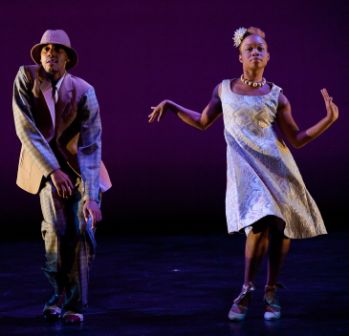
Choreographer and dancer Camille Brown in fussily beribboned mode, with Juel Lane. Photo by Christopher Duggan.
For the rest of the review--Camille Brown's contribution and more on Wonderland-- click here.
And here is the review of the other two, somewhat older choreographers:
The halves of Tuesday's double header at the Joyce (repeating tomorrow) are perfect opposites. Kate Weare's Bright Land offers a world of erotic entanglement that tilts towards treachery and violence. Monica Bill Barnes's Another Parade is comic about even trying to be sexy. What the dances share is bravery, each pushing its eccentric scheme until we squirm.
A subliminal buzz of unresolved tension marks Bright Land despite rounds of polymorphous play. The dance begins conventionally enough, with Adrian Clark and Douglas Gillespie pairing up with Leslie Kraus and Marlena Penney Oden for a sort of square dance. What is unusual is the way the pairs freeze mid-air to reveal how elaborately each couple is conjoined. By the dance's end, Kraus is butting her head into Gillespie's chest - flattening him to the ground like a lid on a coffin. In between these book-ends, the women enjoy a fraught tête-à-tête, as do the men.
All the while, the San Francisco band the Crooked Jades sing odes to what they're witnessing. In their harmonies and scenarios, the Jades' old-time tunes are like the shadow of prison bars cast at noon - light and dark in equal measure - or like the knife-straight arms by which the dancers mark the space between themselves and someone else.
For the rest of the review--Barnes and more on Weare--click here.
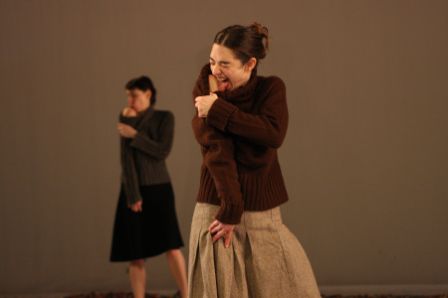
Barnes tries her hand (and tongue) at sexiness in Another Parade.
It's hard not to feel foolish being limited to 400 words--about five modest paragraphs--for a piece of repertory that combines the talents of Handel, Milton, and Morris, but for this August 9 review for the Financial Times I tried:
If it is to be anything at all, Mark Morris's 1988 L'Allegro, il Penseroso ed il Moderato has to be a masterpiece, so vast is the canvas collaborators posthumously handed him."Il Penseroso" and "L'Allegro", the paired Milton odes on which Handel based the work, present no less than contrasting philosophies of living: on the one hand, the contemplative and spiritual life and, on the other, the active and sensual. In the process, the poems traverse day and night, ploughing and hunting, stage and court. The lark "startles the dull night" for the sunny man's sake, while the nightingale shuns "the noise of folly" for the melancholic. Handel's librettist Charles Jennens interweaves the two odes so the two birds, among many other things, appear one after the other in heightened contrast.
Likewise, the oratorio begins with duelling solos between lamenting soprano (here, Christine Brandes) and hearty tenor (John McVeigh). Eventually, though, the solo voices unite and the chorus rises to realise the fullness of possibility - "the hidden soul of harmony" - that is the poems' collective point.
Morris both illustrates the libretto's vivid scenes and comments on them. A herd of women whisks Dallas McMurray, curled up on his side, overhead, their hands reaching up to graze his thighs like the "waters [that] entice dewy-feathered sleep". And....
For the whole thing, click here.
Here are six Financial Times reviews from the last few weeks. They cover events at the Joyce (two), Lincoln Center Festival (three) and outside along the Hudson for the River to River Festival.
To begin, the first of two reviews of Pilobolus's four week season at the Joyce (one week left), which features a collaboration with Art "Maus" Spiegleman (yay!):
There are two strains of Pilobolus - the illustrious dance troupe, not the lowly fungus. The first is comic, exploiting the outlandish possibilities of the human body by imagining its parts as something else: the belly button as electric outlet, the skull as a bell with the neck as its clapper, the torso as plough. The second dramatises the Kama Sutra - or tries, anyway, as hedonism may be a fine lifestyle choice but it stupefies on stage.The two impulses - comic and sexy - cancel each other out, though this has not stopped the 40-year-old company from forcing them together in work after work. The costumes in the repertory pieces last week amounted to variations on the theme of underwear. The dramatic arcs went flat for the sake of the human origami. The soundscapes should have been consigned to a New Age nature show.
So it was a relief to find that the premieres - Hapless Hooligan in 'Still Moving', headlining the first of this summer's three programmes, and Hitched, the second programme's main event and the final piece by Pilobolus co-founder Jonathan Wolken, who died last month and to whom the season is dedicated - belong squarely in the comic camp.....
Hapless Hooligan (the shadow version) in the land of the dead. Photo by Christopher Capozziello for the Wall Street Journal. Full article here.
For my whole review, click here. (This review may require a one-time and free registration.)
I should say, the contributions of Spiegelman--with his references to early comics, early jazz, early experimental animation--wasn't a relief to everyone. On the ladies' bathroom line, where all secrets will eventually be spilled, I heard a member of the Pilobolus inner circle confide to a friend, "So, okay, he can play Manhattan--and maybe Florida [nudge, nudge]--but the middle of the country?"
My followup review, of another Pilobolus premiere:
What laggards the Pilobolus choreographers have become. All but one of the five works on the Joyce's programme - the third, "Contradance" - begins in a fog or ends there. All but two, Gnomen and Pseudopodia, signal their purpose as if by weak wireless.
The four-decade-old troupe is renowned enough for its shape-shifting prowess that it is easy to overlook the theatrical savvy - until it goes missing. In the late co-founder Jonathan Wolken's 1973 solo Pseudopodia, the evening's best piece and its earliest, the moves are nothing special: mainly backward somersaults. But the extraordinary Jun Kuribayashi executes them so silkily - his legs switching places overhead like tongues of flame before he pulls them beneath him to complete the roll - that he comes to resemble a burning bush tumbled by the wind along an open prairie. When the flow of movement is checked - never abruptly but like the lull in a windstorm - you hold your breath. Without telling a story, Pseudopodia conjures a sense of infinitely rolling time. More often, the dances do tell a story (of sorts) and inspire only dismay.
Co-director Michael Tracy's 2008 Lanterna Magica fails to satisfy the most basic questions, such as, "Is this on land or sea?" and "What are fireflies doing with dolphins?" The premiere....
For the whole shabang, click here.
I did a pile of research for this review of the Thai choreographer Pichet Klunchun's Lincoln Center Festival show--and it proved barely enough to understand his "transformations" of classical form. Those of you in New York who want to learn more about the classical Thai dance known as khon might want to take a look at an hour-and-a-half documentary from 1973 of the famous "Floating Lady" episode that Klunchun excerpts. You can watch it in the research division of the Performing Arts Library, at Lincoln Center. Very worthwhile.
Pichet Klunchun's ensemble piece Chui Chai ("Transformation") at the Lincoln Center Festival begins with a bit of khon, a form of dance-drama cultivated in the Thai court and based on stories from the Thai Ramayana. A costume's quantity of gold brocade, the height of a headdress's spires and the level - floor or platform - on which a dancer reclines all signal a character's status. But the movement tells you whether or not he is good.Thodsakarn (Ravana in Sanskrit) - lustful kidnapper of Rama's devoted wife Sita - is bad, for example. You can tell by the immodest splay of his limbs, the cock of his wrist to mimic a spearhead and the impatient stamp of his foot. When his niece Benyaki agrees to transform into Sita to trick Rama, the impulsive demon king sways in triumphant laughter. Benyaki's imitation Sita, in contrast, is seamlessly fluid. Her wrists - the most eloquent part of the body in khon - draw figures in the air and her feet trace circles on the ground.
The scene where Benyaki's flickering temper subsides into Sita's dead calm can be mesmerising, but Klunchun - best known for his 2004 collaboration with comic French conceptualist Jerome Bel - is more interested in other transformations, namely that of Thai culture and the place of khon within it. In a pause in the action, we hear Bangkok pedestrians draw a blank when asked about Sita or assert that this one-time model Thai woman would be a sex worker today, servicing Rama and Thodsakarn alike. Soon....
For the whole review, click here.
A traditionally garbed lady in waiting in the demon king's court and Pichet Klunchun
I had been underwhelmed by the first (for us, anyway) of Bill T. Jones's Lincoln trilogy, Serenade/The Proposition, and had very much wanted to like it, as I could see the work in it and its thoughtfulness. So it was exciting to find the second piece solved the problems of the first, finding a way to get the diverse layers to meaningfully coexist.
When Bill T. Jones was invited to create a piece for Abraham Lincoln's 200th birthday, he made sure it wasn't for Black History Month. Fondly Do We Hope . . . Fervently Do We Pray reassures us too, approaching the Great Emancipator without patriotic dutifulness or bloviating.
The richly layered work for 10 dancers, two singers, a narrator and three multitasking musician-composers begins small. Gorgeous Shayla-Vie Jenkins walks on to a platform off the front of the stage and, while we listen to part of Walt Whitman's detailed praise song of the body - "Leg fibres, knee, knee-pan, upper-leg, under-leg" reads one line - she dances with like-minded factuality, sumptuously yet precisely. Other equally individual cameos are danced to dispassionate statements of belief and scepticism: "He heard of the government of the people for those people," warm-voiced narrator Jamyl Dobson says of an anonymous someone, "but who are those people and is he one of them?"
Throughout most of the 90 minutes, Fondly balances the warm and symbolic with the cool and concrete, the past with its sedimentation in the present, and "the people" with simply a person.....
For the whole review, click here.
It was also neat to watch, soon afterward, Jones's homage to Merce Cunningham, in a tribute show the River to River Festival put on along the Hudson on the anniversary of the great choreographer's death:
For the whole review, click here.
Last year, the Merce Cunningham Dance Company performed in Rockefeller Park along the Hudson River the day after a terrible storm and a week after the great choreographer died, aged 90. The Event, as Cunningham dubbed his seamless compilations of repertory, took place in cleansed air and sunlight, and the dance possessed a similar clarity; to have something so bright and sharp with which to say goodbye was a relief.This year hundreds of people came out on another lovely day for The River to River Festival's Event for Merce. Five New York choreographers presented new work inspired by the Cunningham look or method, or repurposed (as we say in the Age of Trash) old work in Event-like fashion.
Tribute shows are tricky. Those who the guest of honour has had a strong hand in shaping, artistically, are hardly in a position to sort out what they have taken from him; those not under the influence may not feel enough affinity. This show erred in the latter direction - its net was cast too wide.
Faye Driscoll - at 34, the youngest of the choreographers - is a real talent, but she is driven by character and story, precisely what Cunningham left behind.
Minimalist Lucinda Childs - at 70, the oldest - may share his formalist concerns, but as the Philip Glass of dance (though plainer) she functions as an anti-Merce. Cunningham makes you feel the loveliness of such essentials of physics as time: the windows of possibility that open when things happen (as they always do). Childs works according to an airtight logic that locks out not only possibility but even probability. Inevitability prevails in dances that involve the smallest number of steps subjected to the simplest temporal and spatial schemes.
Jon Kinzel, Susan Marshall and Bill T. Jones are smarter choices....

Vicki Shick and Jon Kinzel at Rockefeller Park along the Hudson. Photo courtesy of the River to River Festival.
And finally, the tragedy and pathos that can be evoked with a bit of delicately assembled string and wire:
Rezo Gabriadze's Battle of Stalingrad: A Requiem takes place on a table about six feet wide and three deep. It is an ideal size for a mammoth subject - not only the five-month battle that reduced Stalin's model city on the Volga to rubble and ended millions of lives but, more largely, human vulnerability.
The 74-year-old Georgian playwright, director and puppetmaker depicts the relentless fighting with typical poetic economy. His five puppeteers in black stand shoulder-to-shoulder to slide metal sheets arrayed with rows of tiny helmets along the table to the beat of a spirited Soviet martial tune; when a battalion reaches the table edge, the puppeteer returns it to the back of the line, as if soldiers could be recycled and still there would not be enough of them to fill the maw of war. There never were enough for Stalin, the puppet drama suggests.
More than depicting battle, though, Stalingrad offers glimpses of the people - soldier and civilian - about to die. We meet a Berlin artist, an Odessa gunner, a Kiev handyman, a "transport specialist" (in Soviet parlance, a horse) and a people's artist of the Bashkyr Autonomous Republic (a horse, this time of the circus variety) moments before the life gets knocked out of them.
We know these creatures - their place in society and their character - by the stuff Gabriadze has made them of and by their size.....
For the whole review, click here.
(Am sorry about few photos: blinkered computer.)
AJ Blogs
AJBlogCentral | rssculture
Terry Teachout on the arts in New York City
Andrew Taylor on the business of arts & culture
rock culture approximately
Laura Collins-Hughes on arts, culture and coverage
Richard Kessler on arts education
Douglas McLennan's blog
Dalouge Smith advocates for the Arts
Art from the American Outback
Chloe Veltman on how culture will save the world
For immediate release: the arts are marketable
No genre is the new genre
David Jays on theatre and dance
Paul Levy measures the Angles
Judith H. Dobrzynski on Culture
John Rockwell on the arts
innovations and impediments in not-for-profit arts
Jan Herman - arts, media & culture with 'tude
dance
Apollinaire Scherr talks about dance
Tobi Tobias on dance et al...
jazz
Howard Mandel's freelance Urban Improvisation
Focus on New Orleans. Jazz and Other Sounds
Doug Ramsey on Jazz and other matters...
media
Jeff Weinstein's Cultural Mixology
Martha Bayles on Film...
classical music
Fresh ideas on building arts communities
Greg Sandow performs a book-in-progress
Harvey Sachs on music, and various digressions
Bruce Brubaker on all things Piano
Kyle Gann on music after the fact
Greg Sandow on the future of Classical Music
Norman Lebrecht on Shifting Sound Worlds
Joe Horowitz on music
publishing
Jerome Weeks on Books
Scott McLemee on books, ideas & trash-culture ephemera
theatre
Wendy Rosenfield: covering drama, onstage and off
visual
Public Art, Public Space
Regina Hackett takes her Art To Go
John Perreault's art diary
Lee Rosenbaum's Cultural Commentary
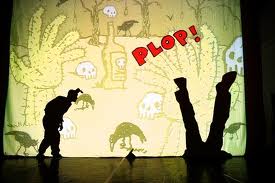
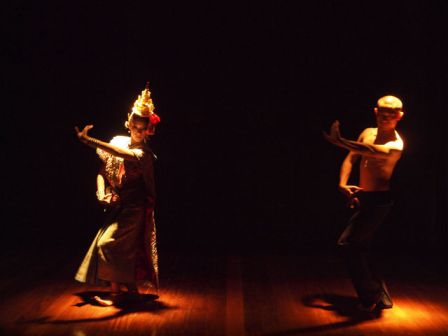

Recent Comments